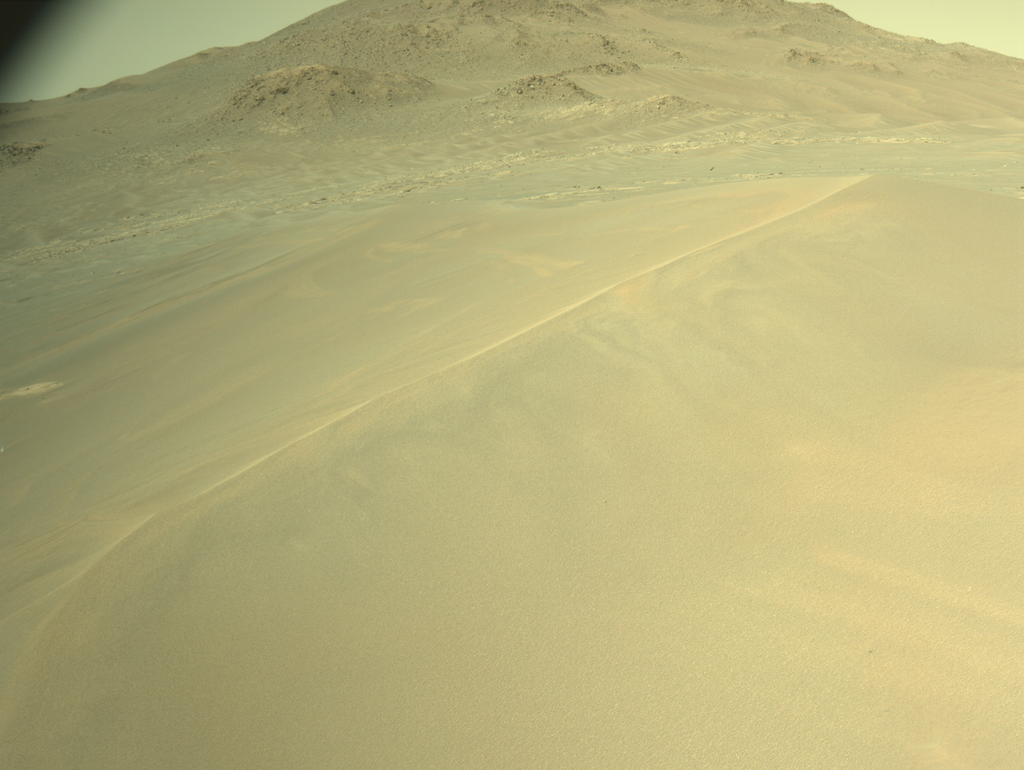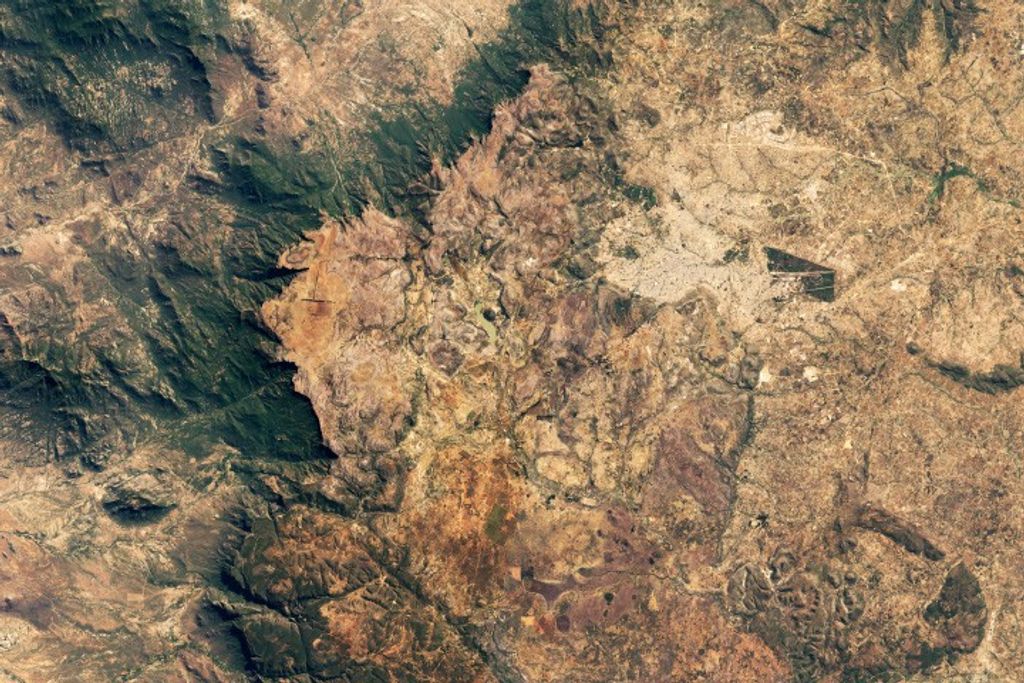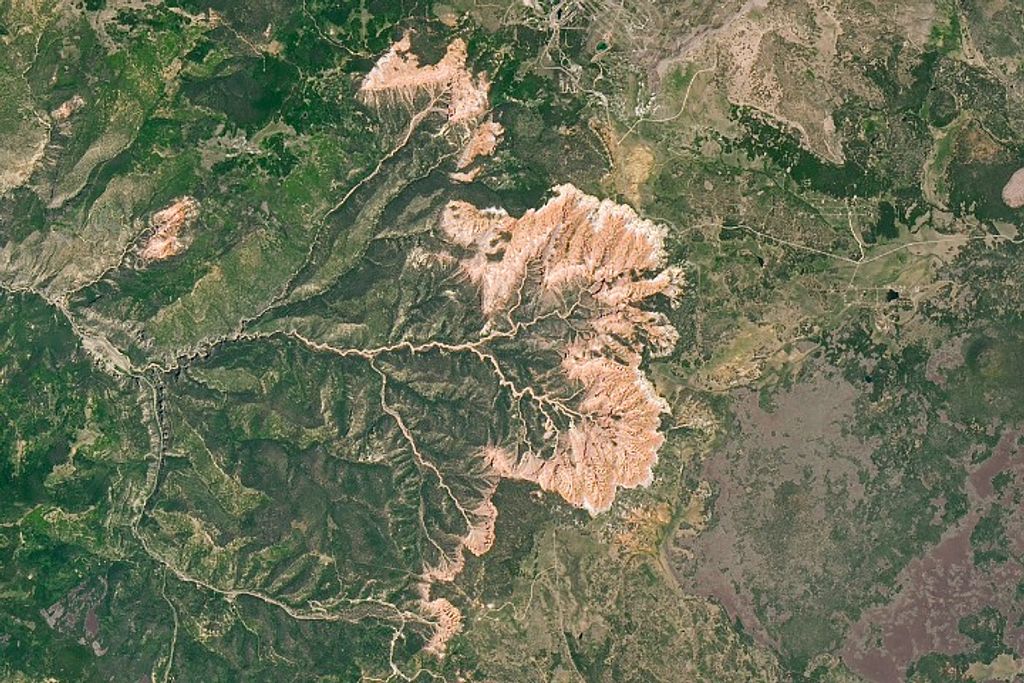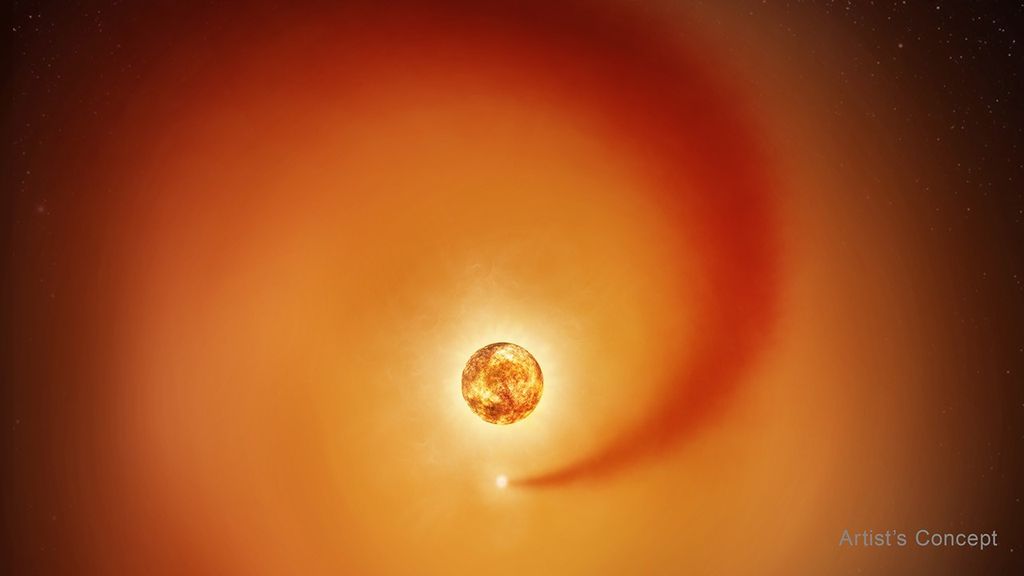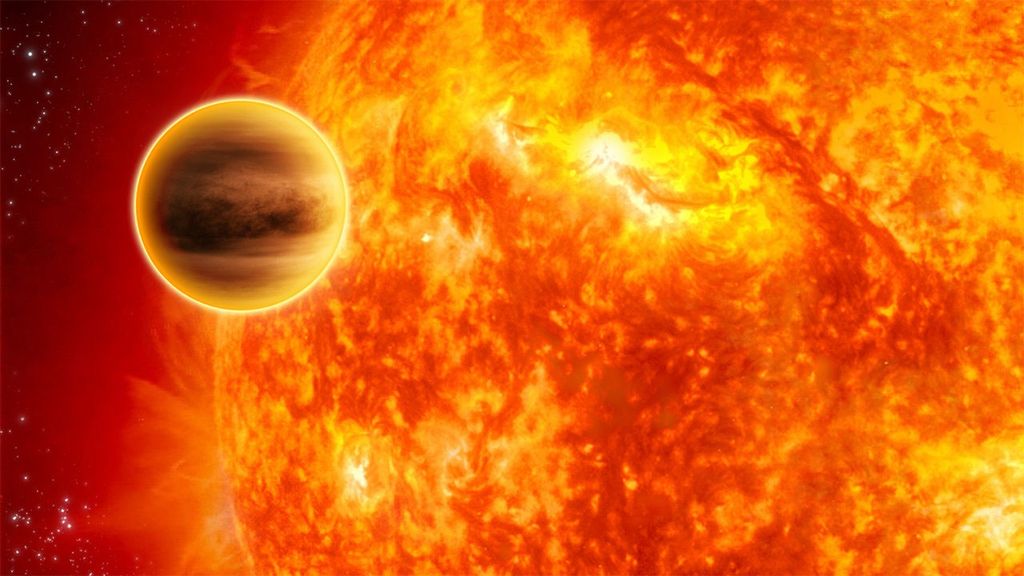1 min read
Flame Nebula: Hubble and Webb Observations
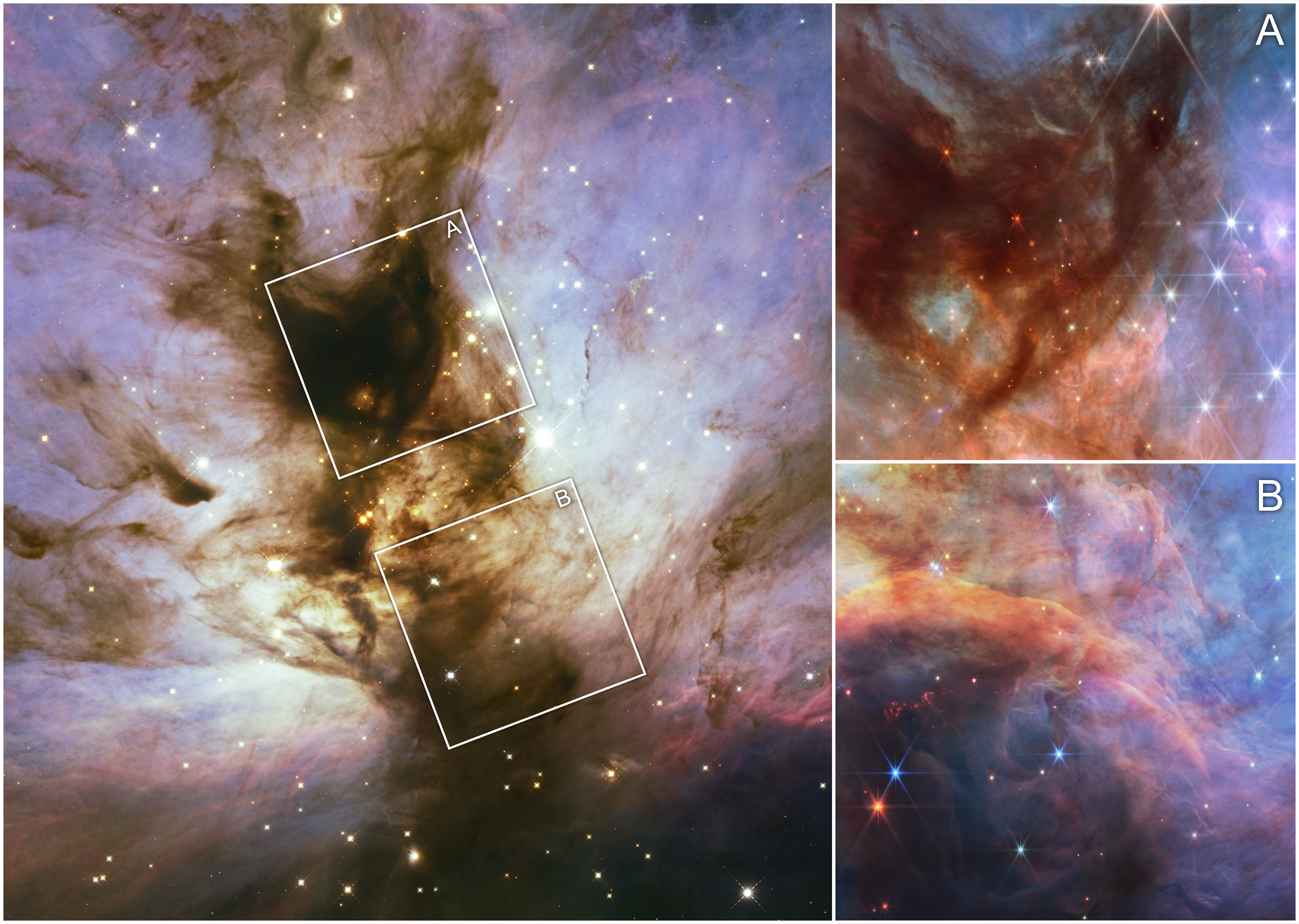
This collage of images from the Flame Nebula shows a near-infrared light view from NASA’s Hubble Space Telescope on the left, while the two insets at the right show the near-infrared view taken by NASA’s James Webb Space Telescope. Much of the dark, dense gas and dust, as well as the surrounding white clouds within the Hubble image, have been cleared in the Webb images, giving us a view into a more translucent cloud pierced by the infrared-producing objects within that are young stars and brown dwarfs. Astronomers used Webb to take a census of the lowest-mass objects within this star-forming region.
The Hubble image on the left represents light at wavelengths of 1.05 microns (filter F105W) as blue, 1.3 microns (F130N) as green, and 1.39 microns (F139M) as red. The two Webb images on the right represent light at wavelengths of 1.15 microns and 1.4 microns (filters F115W and F140M) as blue, 1.82 microns (F182M) as green, 3.6 microns (F360M) as orange, and 4.3 microns (F430M) as red.
About the Object
- R.A. PositionR.A. PositionRight ascension – analogous to longitude – is one component of an object's position.05:41:41.76
- Dec. PositionDec. PositionDeclination – analogous to latitude – is one component of an object's position.-01:54:33.30
- ConstellationConstellationOne of 88 recognized regions of the celestial sphere in which the object appears.Orion
- DistanceDistanceThe physical distance from Earth to the astronomical object. Distances within our solar system are usually measured in Astronomical Units (AU). Distances between stars are usually measured in light-years. Interstellar distances can also be measured in parsecs.About 1,400 light-years
- DimensionsDimensionsThe physical size of the object or the apparent angle it subtends on the sky.Hubble image is 7.2 arcmin across (about 3 light-years) Webb inset is 2 arcmin across (about 0.8 light-years)
About the Data
- Data DescriptionData DescriptionProposal: A description of the observations, their scientific justification, and the links to the data available in the science archive.
Science Team: The astronomers who planned the observations and analyzed the data. "PI" refers to the Principal Investigator. - InstrumentInstrumentThe science instrument used to produce the data.HST> WFC3/IR WEBB> NIRCam
- Exposure DatesExposure DatesThe date(s) that the telescope made its observations and the total exposure time.HST> 27 October 2018 - 24 April 2020 WEBB> 01 March 2023
- FiltersFiltersThe camera filters that were used in the science observations.HST> F105W, F130N, F139M WEBB> F115W, F140M, F182M, F360M, F430M
- Object NameObject NameA name or catalog number that astronomers use to identify an astronomical object.Flame Nebula, NGC 2024
- Object DescriptionObject DescriptionThe type of astronomical object.Star-forming region with LMO's
- Release DateMarch 10, 2025
- Science ReleaseNASA’s Webb Peers Deeper into Mysterious Flame Nebula
- CreditImage: NASA, ESA, CSA, STScI, Michael Meyer (University of Michigan), Matthew De Furio (UT Austin), Massimo Robberto (STScI), Alyssa Pagan (STScI)
Downloads

These images are a composite of separate exposures acquired by the James Webb Space Telescope using the NIRCam instrument and the Hubble Space Telescope using the UVIS/IR instrument. Several filters were used to sample specific wavelength ranges. The color results from assigning different hues (colors) to each monochromatic (grayscale) image associated with an individual filter. In this case, the assigned colors are: Left (Hubble)> Blue= F105W, Green= F130N, Red= F139M Right (Webb)> Blue= F115W + F140M, Green= F182M, Orange= F360M, Red= F430M

Related Images & Videos
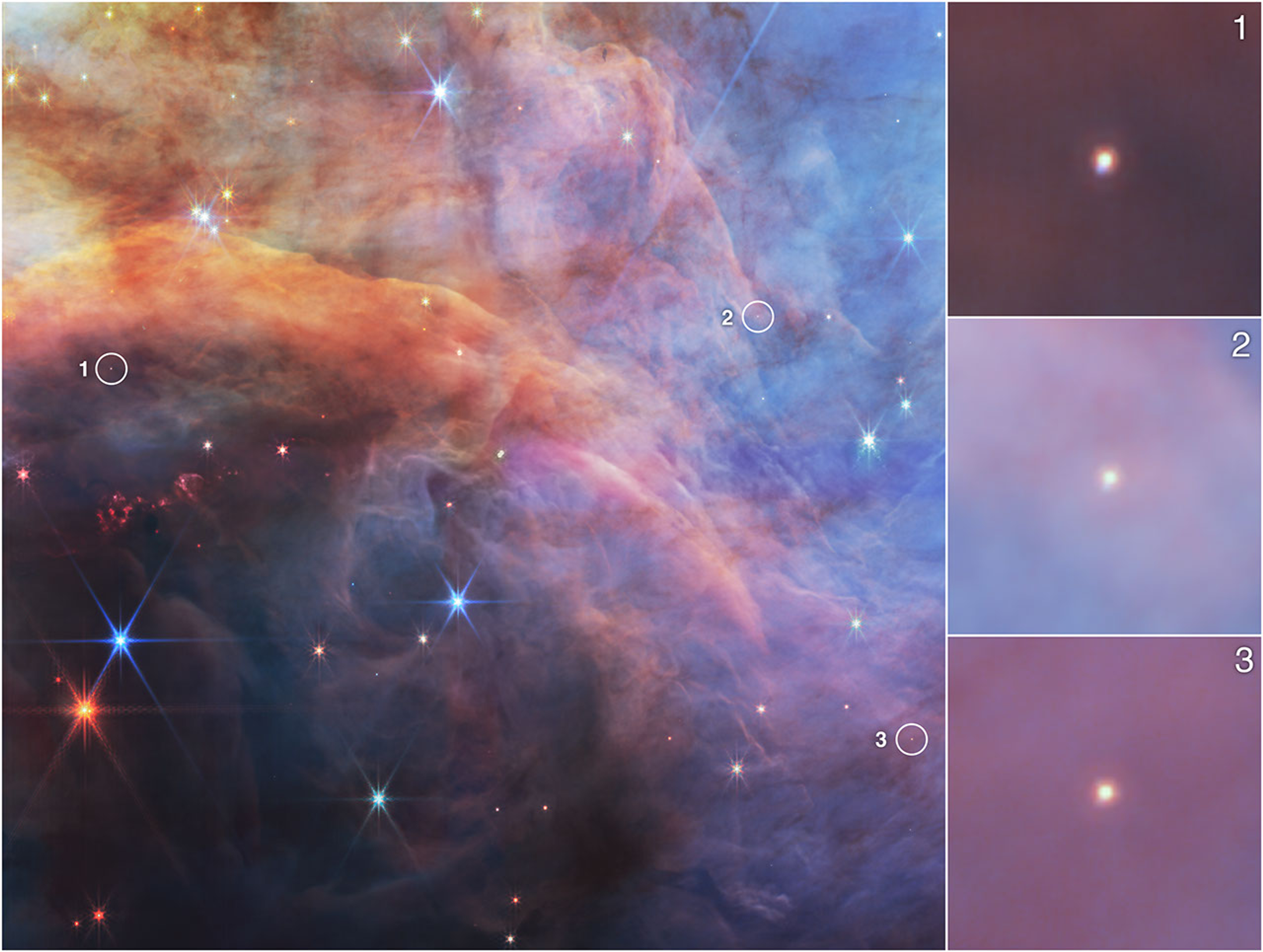
Low Mass Objects within the Flame Nebula (NIRCam Image)
This near-infrared image of a portion of the Flame Nebula from NASA’s James Webb Space Telescope highlights three low-mass objects, seen in the insets to the right. These objects, which are much colder than protostars, require the sensitivity of Webb’s instruments to detect...
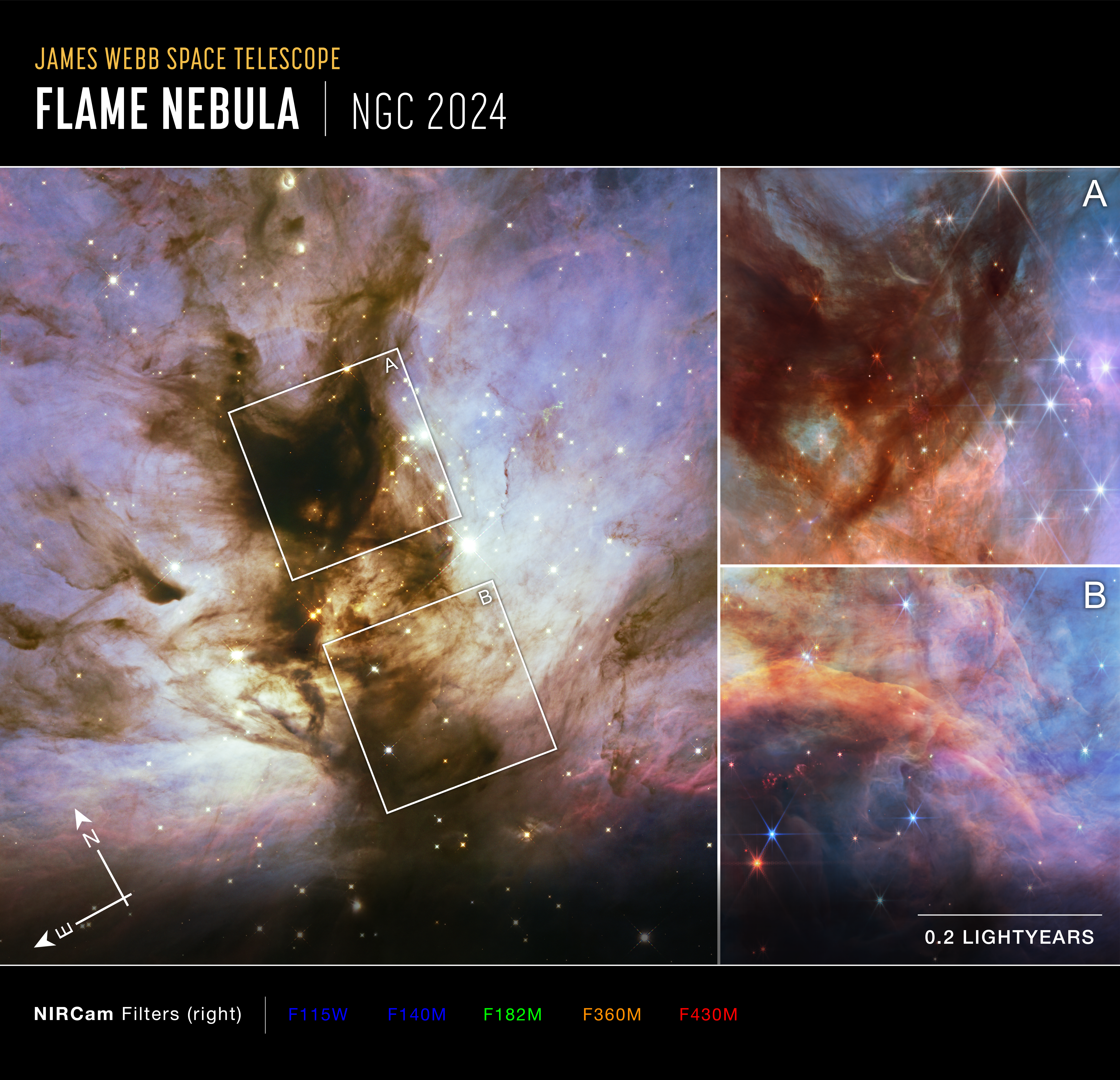
Flame Nebula: Hubble and Webb Observations (Compass Image)
Two images of the Flame Nebula (NGC 2024) at right, captured by Webb’s Near-Infrared Camera (NIRCam), with compass arrows, scale bar, and color key for reference. These images are magnified regions within the greater Flame Nebula, seen in the image at left captured by the Hubble...
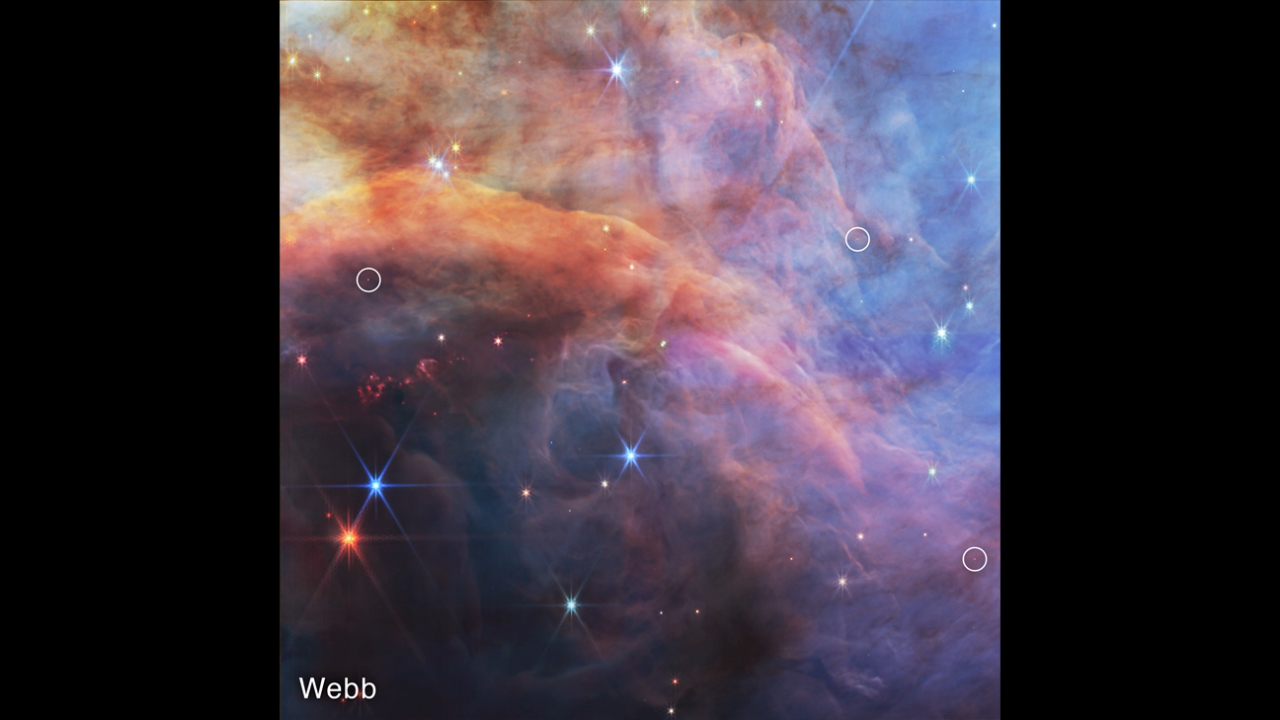
Flame Nebula (Hubble and Webb Comparison)
This video alternates between a Hubble Space Telescope and a James Webb Space Telescope observation of the Flame Nebula, a nearby star-forming nebula less than 1 million years old. In this comparison, three low-mass objects are highlighted. In Hubble’s observation, the low-mass...
Share
Details
Laura Betz
NASA’s Goddard Space Flight Center
Greenbelt, Maryland
laura.e.betz@nasa.gov
NASA, ESA, CSA, STScI, Michael Meyer (University of Michigan), Matthew De Furio (UT Austin), Massimo Robberto (STScI), Alyssa Pagan (STScI)



